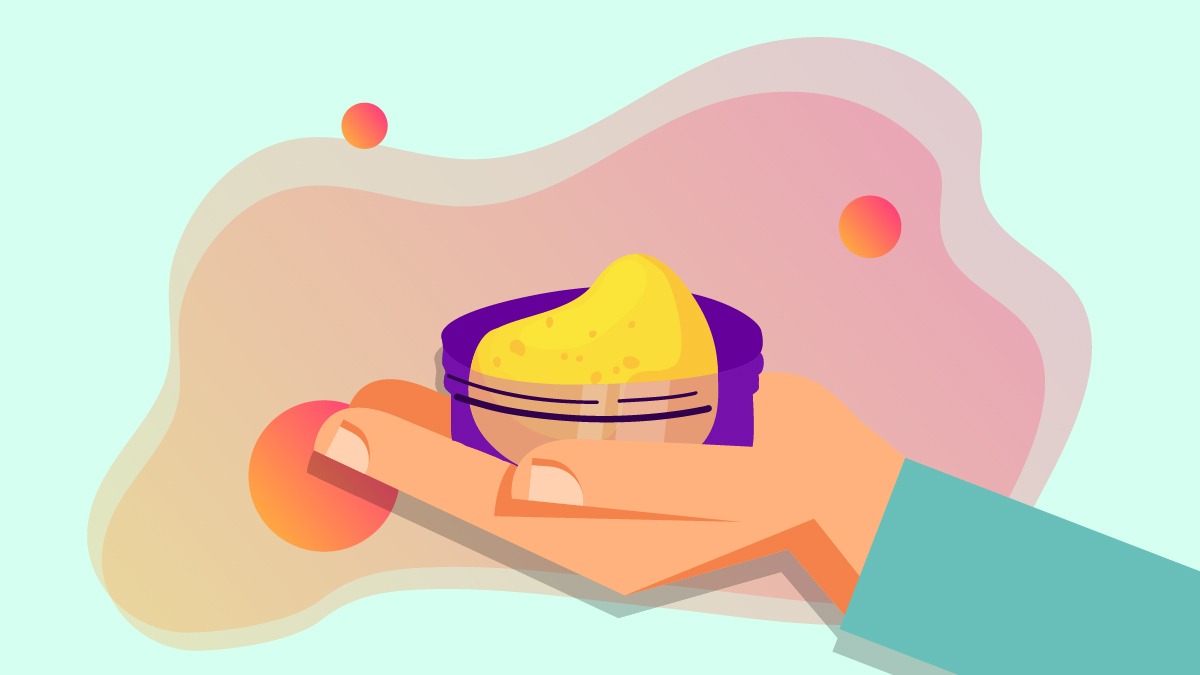Gone are the times when your only choice in a cannabis dispensary was between dried flower and a few edibles. Today, the market is home to an abundance of products in different formats, potencies, and formulas. One of the most popular forms of cannabis are concentrates, such as rosin.
If you can make rosin out of a THC-rich cannabis strain, it’s natural to assume you can make the same product using hemp flowers, which are high in CBD.
CBD rosin is the concentrated form of hemp that is extracted using a mix of gentle pressure and heat to the cured and dried flowers of the hemp plant.
Since the passage of the 2018 Farm Bill, hemp plants have become an agricultural crop legal for cultivation, sale, purchase, transport, possession, and use in all 50 states in the U.S.
CBD rosin is easy to make, and the sourcing material is easy to find. CBD enthusiasts can make rosin at home using a rosin press — a versatile tool for cannabis extraction. If you don’t have the equipment at home, the market prices of CBD rosin are around $45 per gram, with wholesale prices between $20 and $30 per gram.
Today, we cover the benefits of CBD rosin, explain the DIY pressing methods, and answer the frequently asked questions regarding this type of cannabis extract.
What Are the Benefits of Pressing Hemp for CBD Rosin?
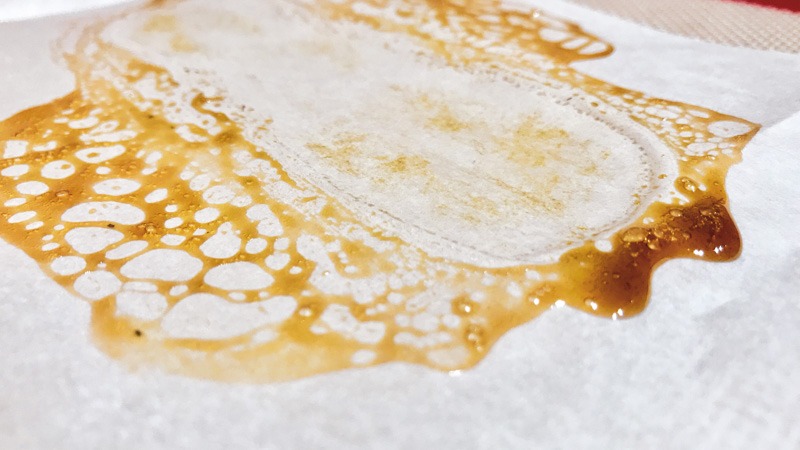
Rosin has been a revolutionary extract for the cannabis industry. The ease of extraction and the amount of extracted materials have given rosin the upper hand in the clash with other types of cannabis extracts.
CBD consumers choose rosin because it doesn’t contain any residual and human-made chemicals such as hydrocarbons (butane, propane, etc.) CBD rosin offers a safe alternative for health-conscious users.
With a bit of common sense and just some basic equipment, you can press your plant material at home to create a potent product that will leverage the health benefits of the cannabinoids it contains.
Here’s why you may want to consider making CBD rosin at home.
Making CBD Rosin Is a Straightforward Process
You don’t need a master’s degree from chemistry or be an engineer to be able to extract CBD rosin. The process requires you to place the raw plant material under a mechanical press that will squeeze the oily resin from it — just like people squeeze the oil out of olives or coconuts.
All you need to make CBD rosin is a quality rosin press, CBD-rich hemp flower, parchment paper, and a collecting tool.
CBD Rosin Extraction Doesn’t Call for Using Solvents
Unlike conventional extraction methods, such as BHO (butane hash oil) and CO2 (carbon dioxide), CBD rosin can be safely obtained in the comfort of your home, using mechanical force.
The BHO extraction process uses toxic solvents that can cause explosions or poison the user if the extract hasn’t been properly purged. CO2 extraction, on the other hand, requires knowledgeable workers and expensive machines that can work in specialized facilities.
CBD doesn’t require any external solvents, so what you get in the end is the natural hydrocarbon terpenes from the trichome glands (1).
CBD rosin also has a superior taste to concentrates extracted with external solvents, as these compounds can impair the flavor and the overall quality of the end product. They aren’t needed in the rosin extraction process to break down the trichomes.
Trichomes are the crystalline glands that produce and secrete cannabinoids and terpenes, the active ingredients of the cannabis plant. They produce CBD, THC, CBC, CBN, CBG, and other cannabinoids. Although not as extensively studied as CBD and THC, CBC, CBN, and CBG also have therapeutic properties.
Research has shown that CBG and CBC are strong antifungal and antimicrobial agents (2), while CBN possesses remarkable sedating properties — allegedly more potent than some benzodiazepines. CBN can also help with inflammation and convulsions in epilepsy patients (3).
The terpenes in trichomes are volatile aromatic molecules that give cannabis strains their unique aromas and flavors. They also have their own health benefits and can act synergistically with cannabinoids to produce the entourage effect. In this concept, all active compounds from hemp amplify each other’s therapeutic effects to help the body process CBD more efficiently.
Materials Are Affordable
You don’t need a fortune to make high-quality CBD rosin at home. All you need is hemp flowers, but you may just as well use shake, kief, or hash.
When the female hemp plant reaches full maturity, it produces CBD-rich flowers. These flowers can also include a wide range of other cannabinoids on top of CBD, including CBG, CBN, CBC, and trace amounts of THC (under 0.3%).
The buds on the flowers contain the highest concentrations of cannabinoids and terpenes when the plant is in full bloom. Patience pays off when it comes to growing hemp for CBD rosin.
How do flowers compare to shake, trim, hash, or kief?
Shakes are considered cannabis leftovers, as they contain small pieces of hemp flowers that have fallen off during harvest or grinding.
CBD shake can contain pieces of flowers, leaves, and stalks. This material is thus less expensive than CBD buds; the quality of your shake will depend on the quality of the collected hemp.
Trim is the plant matter that you cut away from the buds before curing. CBD hemp trim may consist of flowers, shake, and other fine cuttings. Most companies selling CBD trims collect them right after the harvest, using climate-controlled rooms for storage to preserve cannabinoids and terpenes.
Hash, also known as hashish, is a pressed resin derived from the cannabis plant. Dry sift is a type of hash produced by hand-sifting dried flowers or trim through fine-mesh screens.
Finally, kief (or pollen) is made of trichomes that fall off the hemp buds when you grind them. Once you collect enough kief in the kief catcher of your grinder, you can use it for making CBD rosin.
How to Make CBD Rosin
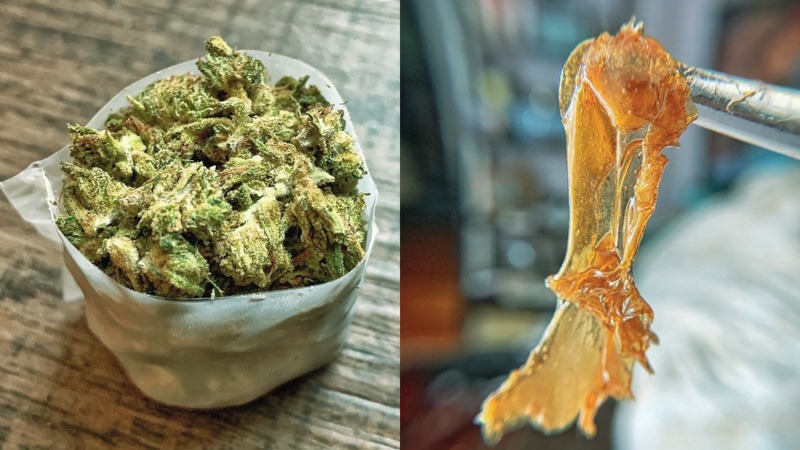
CBD rosin is extracted using a method known as rosin tech. This extraction method is based on three principles that affect the yield and the quality of the final product: pressure, time, and temperature. Usually, the process requires a multi-ton press, some filters, parchment paper, and a collecting tool.
Hemp is the best material for extracting CBD because it contains higher concentrations of this cannabinoid than an average marijuana strain. Its terpenes are more resilient to heat and repeated pressing than weed. Hemp also allows for keeping the THC content of your CBD rosin below 0.3%.
If you want to get the most out of the plant material, make sure to apply higher temperatures for an extended period; doing so will yield you decent quantities of CBD rosin.
A Step-by-Step Guide to Making CBD Rosin at Home
- Purchase a high-quality rosin press and learn how it works. Presses have different pressure and temperature settings; they also vary in terms of how they generate pressure.
- Get CBD flowers from a reliable brand. Prepare the parchment paper, filters, and a collecting tool.
- Produce your CBD rosin in small batches for the best results. Place the hemp flower between sheets of parchment paper.
- Once heated, use the press to force the plant material against the surface, following the manufacturer’s instructions to apply the correct pressure and temperature. You’ll need to place the rosin paper with the hemp flower between the two plates of your rosin press.
- Collect the rosin from the pressed material. Your finished product should be translucent with a sappy, sticky texture.
Manual vs Electric: Which Rosin Press Should You Use?
A rosin press can be a worthwhile investment that gives you the opportunity to produce different types of cannabis products. CBD rosin could be one of them.
Pressing rosin is a physical process that doesn’t call for using solvents. All you need to squeeze the oils out of the plant material is a high-quality rosin press, parchment paper, hemp flower, and a collecting tool to make chemical-free CBD rosin.
A standard rosin press consists of two heated plates, which heat and apply pressure to the flower. There are two types of rosin presses: manual and electric.
A manual press crushes and forces the starting material to compress using a clamp or a screw system. Pneumatic presses utilize air or gas, while hydraulic presses use water that operates under pressure.
Electric presses are more accurate when it comes to compacting the material thanks to using a motor. This type of press is a high-speed, low-maintenance option for those who can’t afford a manual press.
You can get a decent rosin press at $200, although premium models will call for a higher cost — around $800. Such models will come with pre-programmed pressure and temperature settings.
Quality of Hemp: Why It Matters
CBD flowers are the buds that grow on the mature female hemp plant. These flowers contain high concentrations of CBD and only a trace amount of THC, usually at 0.3% or less.
Under the 2018 Farm Bill, CBD hemp flowers are legal for sale in all 50 states. However, hemp flowers vary in their CBD content. Those containing a considerable amount of CBD are usually selectively bred for that purpose — and to level down the THC profile so the product stays compliant with the federal law.
You can find hemp brands selling CBD flowers all over the internet. However, when browsing through different CBD strains, make sure that they come from organic farms and have been grown either indoors or outdoors without pesticides, herbicides, and other dangerous additives. A reputable manufacturer should be able to provide the lab reports from the third-party analysis.
What’s the Best Temperature Range for Making CBD Rosin?
Temperature is the key player that affects the quality and overall yield of CBD rosin. The ideal temperature will depend on the chemical profile of the plant.
When it comes to dry sift, hash, or terpene-rich flowers, they should be extracted at lower temperatures because the terpenes secreted in the flower’s trichomes will act as a natural solvent during the initial press.
However, lower temperatures (150 – 250 F) typically result in a lower yield. However, with a higher terpene content, the user can experience full-bodied flavors and a more stable product. The consistency of CBD rosin that has been made at low temperatures resembles butter or honey.
Higher temperatures (250 – 330 F) will produce higher yields but with fewer terpenes. The flavor of the end product will be subtle and lighter in consistency — it looks more like a sap.
How to Maximize CBD Rosin Yield
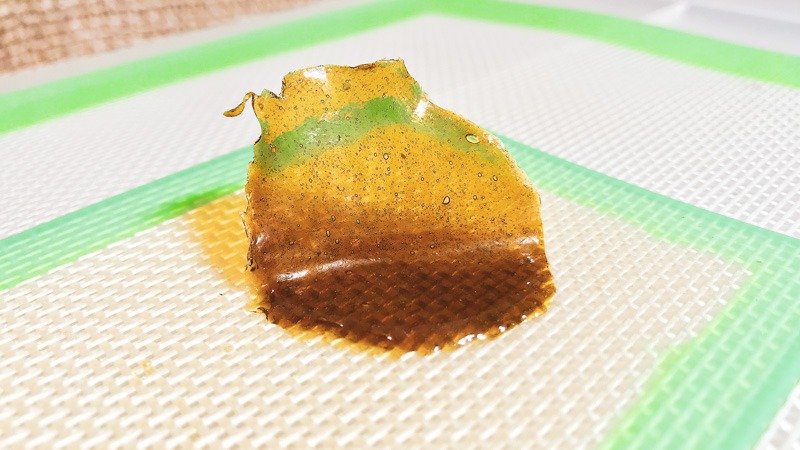
Here we need to take several factors into consideration.
First, hemp is usually less resinous than THC-rich cannabis, as some rosin enthusiasts reported. This means that you’ll need to use more flowers to get reasonable yields, under the best possible circumstances. Optimal yields are estimated to be 10% to 18% of the total weight of hemp.
Higher temperatures and the extended application would yield more CBD rosin. If you want to optimize the quality of extracted CBD rosin, aim for the desired yield, and then adjust the settings of your device.
If you successfully attain the yield of 15% by weight of CBD rosin, you can decrease the time of the press to achieve a better quality extract.
As they say, practice makes perfect, so as you continue to press more rosin, the experience will be worthwhile in the end.
Unfortunately, there is no sacred code for breaking specific settings that could improve yield and its quality instantly. Different strains or even the same buds grow by another company, can react differently to the same settings of your rosin press. Each strain will require different time and heat to get the most out of it.
Follow These Steps to Produce the Best CBD Rosin Yield
1. Time and Temperature Settings
Rosin enthusiasts suggest starting with 220 F for about 40 seconds for hemp flowers. When it comes to kief or hash, the recommended time for one pressing is 65 seconds, with temperatures ranging between 170–190 F.
Other manufacturers recommend setting the heat between 190–220 F and pressing for 45 seconds to 3 minutes. This technique usually yields a shatter-like consistency that contains high levels of terpenes if extracted at 220F or below.
The ideal extraction time and temperature will vary depending on the quality of your rosin press, the amount and quality of hemp flower, as well as the type of cannabis, humidity content, and the strain’s unique chemical profile.
2. The Amount of Hemp Pressed
Use between 1–1.5 grams for a single press, or as per manufacturer’s instructions. The secret behind achieving the best CBD rosin quality is working in small batches because the flower gets exposed to high temperatures for only a short time.
3. The Type of Press
Use a press that will allow you to carefully monitor the process and make some adjustments as needed to gain high-quality yields.
Remember that too much pressure can transfer unwanted plant matter into rosin, so make sure to press moderately.
Once the rosin press has been set up to optimal pressure, it will start seeping out fast. However, the flow of oil will slow down after a few minutes, so once it happens, raise the pressure for about 5 to 10 psi at a time.
Your first CBD rosin extraction will require some trial and error but keep in mind that Rome wasn’t built in one day either. Every additional pressure will push out a little extra rosin from the hemp material. Repeat this step to extract the maximum quantity.
Be careful not to go overboard with pressure to avoid a “blow out”, especially when working with filter bags. A blowout occurs when a filter bag tears apart during the pressing process. This leads to unwanted plant material getting mixed into the rosin, ruining the quality of the final product.
Blowouts mostly result from poor technique. If you’ve never pressed hemp flowers before, you should practice patience as you try to get a grasp of the basic pressing methods.
CBD Rosin FAQ
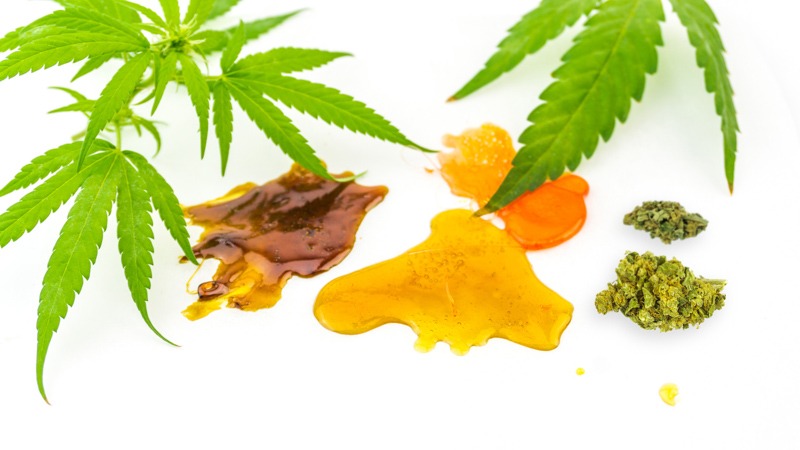
Can You Travel with CBD Rosin?
Yes, as long as your CBD rosin contains 0.3% or less THC.
However, there are still certain limits and restrictions on hemp distribution. Despite the passage of the 2018 Farm Bill, the U.S. Food and Drug Administration has the authority to supervise CBD’s inclusion in food products.
The FDA stated that it would continue to punish companies that advertise CBD-infused edibles across state lines.
Fortunately, CBD rosin has been excluded from the FDA’s regulatory control. After extracting the resin from the hemp flower, the product becomes more concentrated, but it shouldn’t breach the legally accepted THC threshold. The best way to ensure that your CBD rosin is legal is to purchase from a manufacturer who can provide third-party lab reports and Certificates of Analysis (COA) for the rosin. If this is homemade rosin, you can send a sample to a third-party laboratory yourself.
What is rosin winterization?
Rosin winterization is a process that involves food-grade alcohol in order to isolate fats, waxes, and lipids from concentrates. It’s a cost-effective way to purify the rosin from unwanted compounds. Winterized rosin can be added to edibles, e-liquid, and even dabs. Remember to purge the alcohol before consuming a winterized product.
What’s the difference between resin and live resin?
Also referred to as sap, resin describes the soft and sticky glands (trichomes) that appear on the surface of the flowers and sugar leaves of the mature cannabis plants.
Sugar leaves are the small leaves that grow out of the buds during the flowering growth phase. People call them sugar leaves because they are coated with trichomes to the point they look like a dusting of white sugar.
The resin secretes cannabinoids and terpenes. The extraction of resin yields highly concentrated products in terms of their cannabinoid and terpene content.
Terpenes are incredibly volatile, meaning that any extraction involving high temperatures can destroy some of the terpenes, laying a shadow over the medicinal value of the product.
Resin can also mean the brown or black tar that covers dirty pipes and bongs, especially if a person is smoking high-THC flowers.
Live resin, on the other hand, is the latest trend among cannabis concentrate manufacturers. It has emerged in legal states like Colorado, California, Oregon, and Washington.
Live resin calls for using expensive high-tech equipment and trained lab workers, so it’s not something you can perform at home. For now, this process is reserved exclusively for professionals.
This particular concentrate requires the cryogenic freezing of a freshly harvested plant at temperatures under -292 F. This process involves the whole plant, including the flowers, leaves, stems, and stalks, so it’s often referred to as a full-spectrum product. Since no heat or pressure is applied during the extraction, it preserves the original chemical profile of the plant. That’s why live resin is the most expensive form of cannabis concentrate.
Is CBD oil the same as hemp oil?
CBD oil is sourced from the flowers of the cannabis plant; it can be extracted from both cannabis and hemp. The extraction process involves solvents like CO2, alcohol, or hydrocarbons.
Hemp oil is an umbrella term used to talk about CBD oil or hemp seed oil (more on that in the next point).
The type of cannabis used for extraction determines the THC content of the final product. Hemp plants contain less than 0.3% THC, while marijuana has high concentrations of this psychoactive cannabinoid. If you want to reap the health benefits from cannabis without the signature “high,” you should opt for hemp-derived products.
Is Hemp oil the same as hemp seed oil?
As mentioned, hemp oil is a broad term to describe both CBD oil and hemp seed oil.
However, these are two completely different products.
Since CBD oil is extracted from the flowers, it contains high levels of CBD and other cannabinoids.
Hemp seed oil is made from the seeds, which have no cannabinoids at all. On the other hand, they contain an excellent ratio of Omega-3 to Omega-6 fatty acids, vitamins, minerals, and amino acids (4). The hemp seed oil also has anti-inflammatory properties and supports cardiovascular health.
But then again, you won’t find any CBD or other medical-grade compounds in the seeds of hemp. These are secreted in the plant’s flowers and sugar leaves.
Other Types of CBD Extracts
Hemp flowers have a higher CBD content than other parts of the plant. They are used to make CBD oil drops, isolate, and other CBD concentrates.
Other CBD formats include tinctures, capsules, gummies, vapes, lotions, and creams.
There are also concentrates that contain remarkably high levels of CBD; these include CBD isolates as well as broad-spectrum and full-spectrum CBD oil.
Concentrates have different cannabinoid and terpene profiles, depending on where they come from and how they have been made.
The best way to consume CBD concentrates, such as CBD rosin, is through vaping and dabbing. Both methods deliver instantaneous effects, although vaping is considered safer than dabbing because the latter involves combustion. Vaporization gently heats the material so it releases CBD-rich vapor, which can be then inhaled through the mouthpiece of a vape pen.
Some of the common types of CBD concentrates include wax, shatter, budder, crumble, terpsolate (Terpene and Isolate), and rosin. Most of the names come from the way these products are extracted.
Shatter
CBD shatter is one of the purest forms of CBD oil that gives you the highest concentration of CBD for the money (except for CBD isolate). It contains little to no THC, which makes it a perfect product for those who are afraid of failing a scheduled or random drug test.
Crumble
Crumble has more moisture than shatter. It crumbles into pieces and is easier to handle than its glass-like counterpart.
Wax
CBD wax has a wax-like consistency and a yellowish color. Budder, or badder, is a softer, solid variety of wax with a texture similar to butter — hence the name.
Terpsolate
Terpsolate is made by infusing CBD isolate powder with terpenes. The end product can look like anything between a powder to a thick mixture.
THC Rosin vs. CBD Rosin
New consumers may find these concentrates strikingly similar, and you can’t judge them for that. For a novice’s eye, CBD and THC rosin will look the same. Fortunately, these products will have respective labels on them, so when you see a name like “CBD rosin” or “hemp rosin,” this means you’re looking at a non-psychoactive product.
Final Thoughts on Making CBD Rosin
Making CBD rosin at home is a fun way to get the most out of your hemp flower’s CBD content. Smoking or vaping the flower alone is great, but it will never deliver the potency offered by concentrates like rosin. The production process is quite easy and versatile, allowing you to manipulate temperature and time settings for the maximum yield and highest quality.
However, you must keep an eye on some essential factors, such as choosing a high-quality rosin press, getting organic hemp flowers, and spending time experimenting with different techniques and settings to achieve perfection.
CBD concentrates, like CBD rosin, have been proven to alleviate the same symptoms that CBD flowers and oils, including anxiety, pain, insomnia, migraines, and autoimmune conditions.
Still, we encourage you to talk to a doctor experienced in cannabis treatments to get professional advice and establish the right dosage for your situation before using CBD rosin as part of your medication.
References:
- Tanzi, Celine & Vian, Maryline & Ginies, Christian & Elmaataoui, Mohamed & Chemat, Farid. (2012). Terpenes as Green Solvents for Extraction of Oil from Microalgae. Molecules (Basel, Switzerland). 17. 8196-205. 10.3390/molecules17078196.
- Eisohly HN, Turner CE, Clark AM, Eisohly MA. Synthesis and antimicrobial activities of certain cannabichromene and cannabigerol related compounds. J Pharm Sci. 1982 Dec; 71(12):1319-23. DOI: https://doi.org/10.1002/jps.2600711204.
- Turner CE, Elsohly MA, Boeren EG. Constituents of Cannabis sativa L. XVII. A review of the natural constituents. J Nat Prod. 1980 Mar-Apr; 43(2):169-234; Evans FJ. Cannabinoids: the separation of central from peripheral effects on a structural basis. Planta Med. 1991 Oct; 57(7):S60-7.
- Rodriguez-Leyva D, Pierce GN. The cardiac and hemostatic effects of dietary hempseed. Nutr Metab (Lond). 2010;7:32. Published 2010 Apr 21. DOI:10.1186/1743-7075-7-32.

